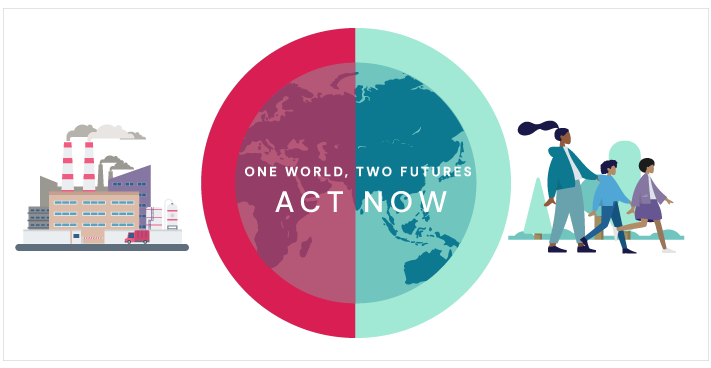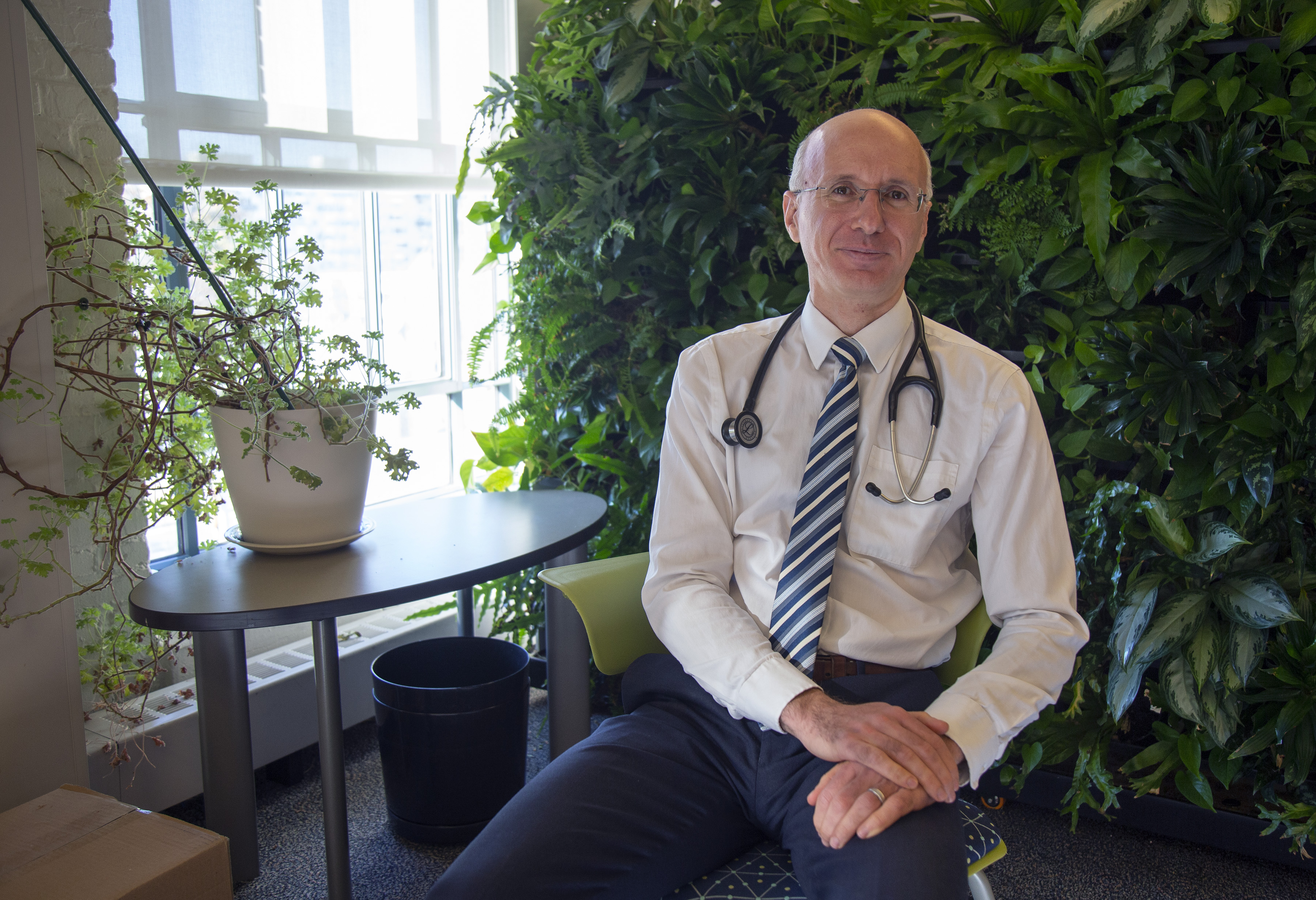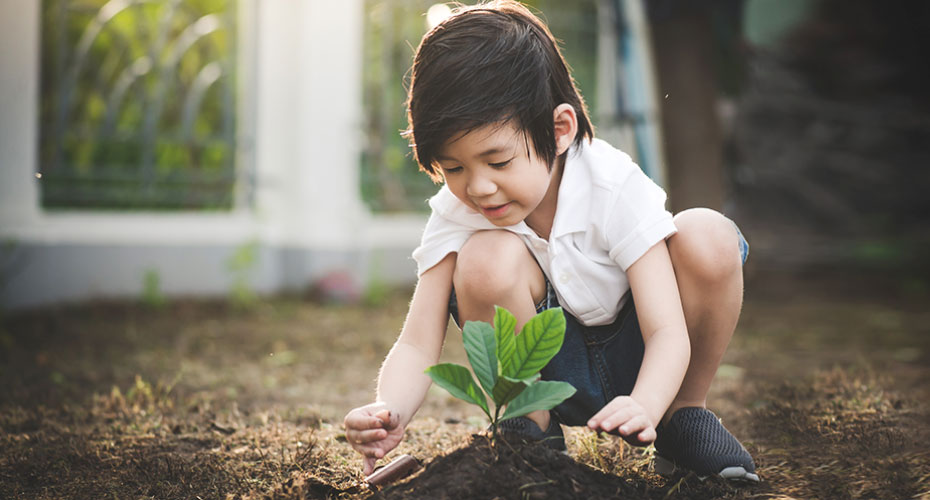Apr 20, 2021
What Earth Day means to our children
In a Coverage series, a physician explores the ways health and health care are affected by climate change, and highlights climate actions families can take to ensure that we provide our children and our loved ones with a healthier, more just, and sustainable world.
When I started out as a pediatrician 15 years ago, colleagues often asked what business I had concerning myself with the planet’s welfare. We were pediatricians. We were supposed to focus on curing the children in our exam rooms and hospital beds, not the world in which they lived, even if that world was becoming less and less conducive to their health and happiness. Rarely did anyone speak about why the planet’s welfare matters for our children. Fortunately, times have changed.
With each passing Earth Day, the need for all of us to act on climate change becomes more and more urgent, especially for the health and welfare of our children.
Pediatricians want to do everything we can to ensure every child has the opportunity to reach their full potential and so it’s no surprise that we have been among the most engaged members of the medical community on climate. For us, climate action is about more than providing a livable planet for our children’s future, or staving off the onslaught of extreme weather -- heat waves, wildfires, and hurricanes -- that has devastated so many children’s lives already. For us, climate action is about making our young patients’ health and lives better today.

Climate action is children’s health action
To combat climate change, we need to transition away from fossil fuels for electricity generation and transportation, eat more plants, and make our buildings and communities more sustainable. Those are also the actions we need to take to combat health conditions that afflict our children, including asthma, obesity, and mental health disorders.
Burning fossil fuels generates enough air pollution to kill more than 300,000 Americans each year. Air pollution is responsible for one in five children who have asthma. We know that children living in low-income neighborhoods and Black American and Hispanic American children breathe more air pollution than others and that the poverty exacerbates the harm of pollution. When we stop burning fossil fuels, we can help right the injustices they have created.
And medical studies clearly show that when less fossil fuel burns, children’s lungs benefit: shuttering coal fired power plants around Chicago has led to a reduction in young asthmatic children heading to emergency departments.
Fossil fuel-sourced air pollution has also been linked to other serious health issues, including lower birth weights and preterm birth, high blood pressure, and developmental delays. No renewable energy source comes anywhere close to exacting as much disease.
The same children who are more likely to breathe polluted air are also most likely to live in neighborhoods with less greenspace, limited access to public transportation, and more junk food outlets than grocery stores. No wonder they are more likely to be obese. Today, one in five adolescents in the United States are obese — three times more than when I entered medical school. Obesity is arguably the single biggest health problem facing our children. Obese children are at risk for diabetes, asthma, menstrual problems, and, later in life, heart disease, stroke and cancer. To promote healthier body weights, we need communities designed for health, including lower greenhouse gas emissions.
How children get to school, what they eat, and where they play all have an effect on their body weight. In healthy communities, children have safe and accessible ways to walk and bike to school. Public transportation is accessible, affordable and reliable. Parks and playgrounds are well maintained and near schools and homes, and children have ready access to greenspace, which can benefit children’s minds and bodies. And these communities have limited access to junk food and more stores that sell fresh produce and nutritious food at affordable prices.
Solutions are within our grasp
If this community sounds like a fantasy, it isn’t. King County, Washington has a mobility agenda that prioritizes transportation based on equity, health and sustainability. Boston has Daily Table, a nonprofit grocery that offers affordable, nutritious food and teaches children how to cook in the store. The store uses produce that might have a blemish - and so is unsellable on a shelf - to provide prepared meals at substantially lower cost, also preventing food waste. Green Heart Louisville plans to use trees to improve health in disadvantaged neighborhoods. Urban greenspace cools cities down and can reduce AC demand. Less AC use means less air pollution and less greenhouse gases. These are just three examples of how climate actions can promote child health and health equity.
In another 15 years, I’ll be closing in on retirement. I wonder what my conversations around Earth Day will be with my colleagues then.
Will we be able to say that we acted on climate and have seen unprecedented gains for the health of our children?
I surely hope so, because I know that my children, and all our children, will be looking us in the eye and asking us what we did, with all we know, to protect their health today and secure the planet that sustains us all.
Did you find this article informative?
All Coverage content can be reprinted for free.
Read more here.

Dr. Aaron Bernstein is director of the Center for Climate, Health, and the Global Environment at the Harvard T.H. Chan School of Public Health (Harvard Chan C-CHANGE) and a pediatrician at Boston Children’s Hospital.
PHOTO OF Dr. AARON BERNSTEIN BY JOHN WILCOX

